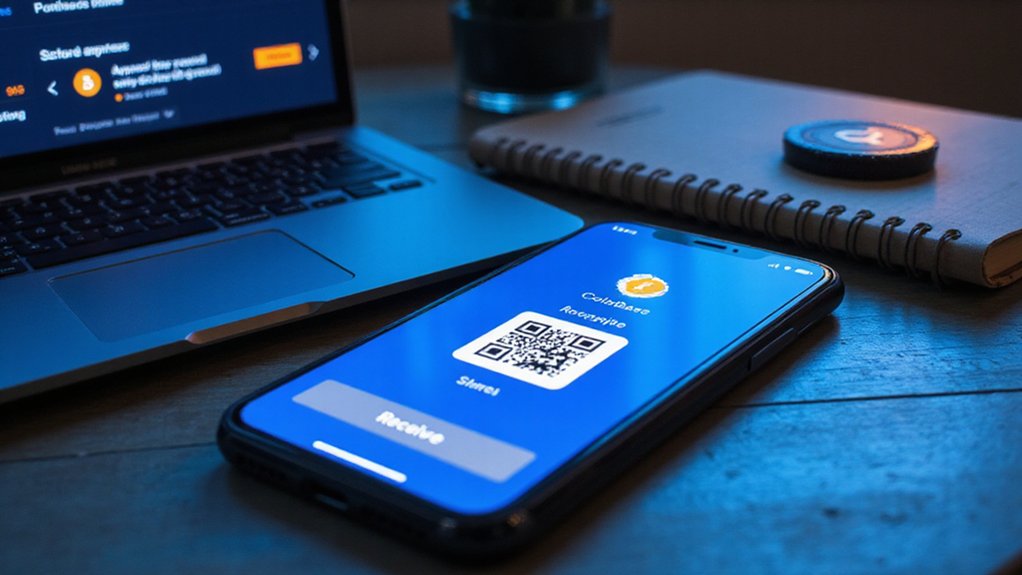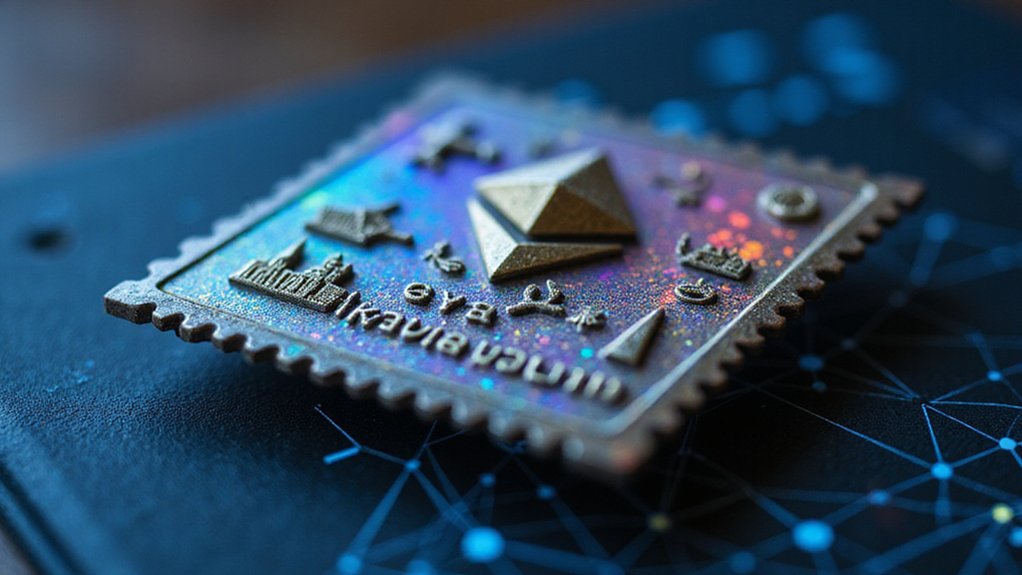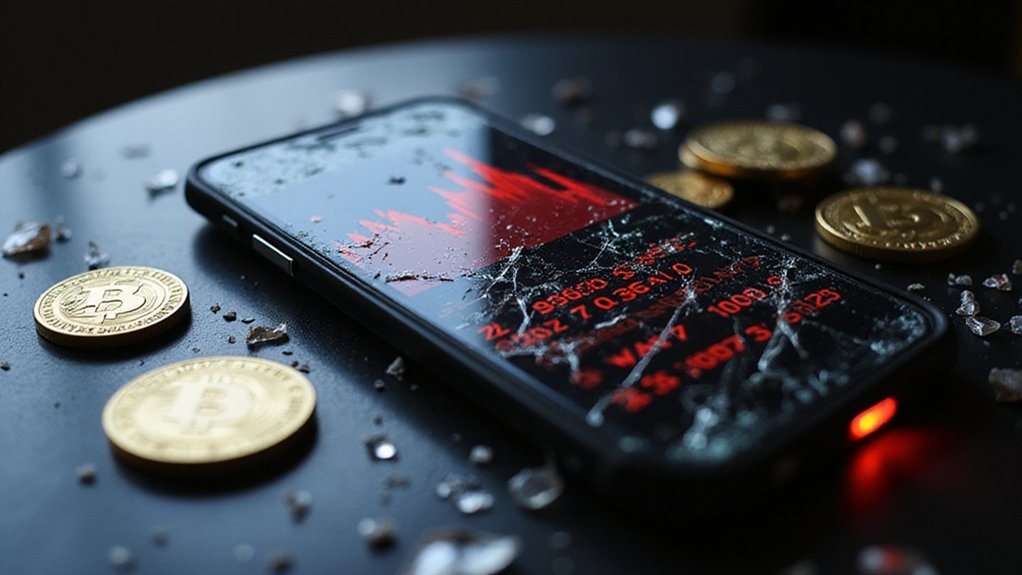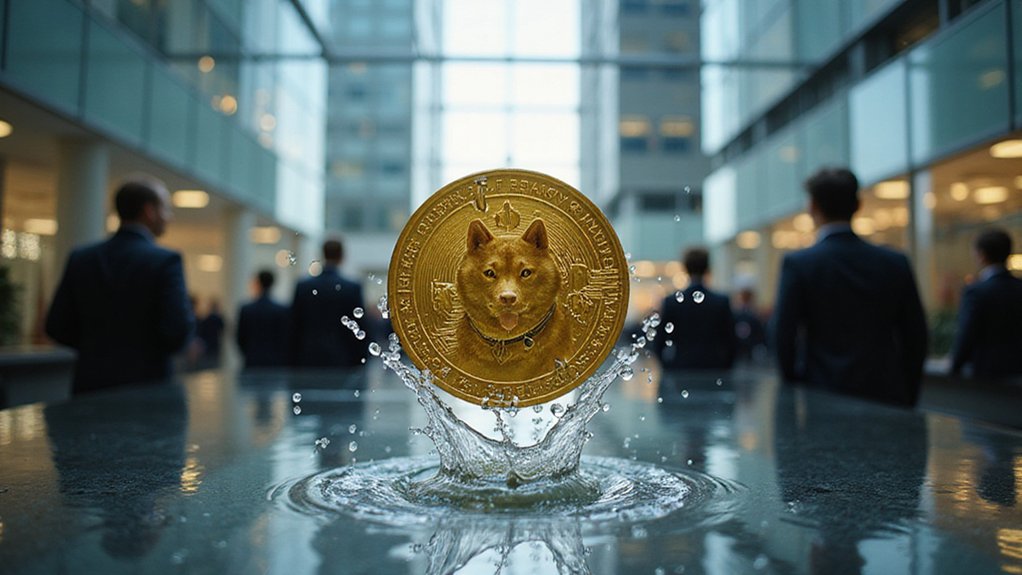To locate a Coinbase wallet address, users must first log into their account (desktop) or app (mobile), then select the specific cryptocurrency they wish to transact with. Next, clicking the “Receive crypto” option reveals the alphanumeric address and corresponding QR code. Different cryptocurrencies generate distinct addresses—a critical distinction that prevents assets from vanishing into the digital ether. Historical addresses remain accessible through the “Crypto addresses” section, should one need to reference previous transaction pathways.

Three distinct methods exist for locating a Coinbase wallet address, each catering to different user preferences and technological contexts.
The most straightforward approach—employed by desktop users exploring the labyrinthine world of digital assets—begins with logging into one’s Coinbase account, where the tantalizing promise of blockchain-based wealth awaits.
Desktop users wade through digital complexity, seeking Coinbase wallet addresses where blockchain riches tantalizingly beckon.
After selecting the specific cryptocurrency (because heaven forbid a universal address might simplify matters), users can locate the “Receive crypto” option, which displays both the alphanumeric address and corresponding QR code—that peculiar square pattern representing financial freedom in the 21st century.
Mobile users, perpetually tethered to their devices, follow a similar if slightly modified procedure.
Upon accessing the Coinbase app, they must select their desired cryptocurrency, tap “Receive crypto,” and voilà—the wallet address materializes alongside its QR companion.
The option to switch networks presents itself for those cryptocurrencies audacious enough to operate across multiple blockchain frameworks.
One might wonder why such complexity persists in an ecosystem ostensibly designed for accessibility.
For those requiring historical addresses (perhaps for tax documentation or merely to reminisce about transactions past), Coinbase provides a “Crypto addresses” section where previous addresses reside in digital perpetuity.
Users may filter through the “Tradable assets” dropdown to locate specific cryptocurrency addresses—a feature particularly useful when attempting to trace that ill-advised transaction from 2017¹.
Each wallet address functions as a unique identifier—a public key in cryptographic parlance—specific to a particular cryptocurrency network.
These addresses facilitate the sending and receiving of digital assets, generating transaction hashes when used.
While users may maintain multiple addresses (organizing one’s crypto portfolio requires meticulous attention to detail), it remains imperative that the address type corresponds to the cryptocurrency being transacted.
The consequences of cross-network confusion can be financially devastating, resulting in the digital equivalent of sending one’s assets into the void.
Users seeking to minimize transaction costs should consider using Coinbase Advanced Trade for higher volume transactions, as the maker-taker fee structure offers potentially lower rates than standard Coinbase fees.
¹The author assumes no responsibility for cryptocurrency-related financial decisions made during bull markets.
Frequently Asked Questions
Can I Use the Same Wallet Address for Different Cryptocurrencies?
Users cannot employ a single address for all cryptocurrencies in Coinbase Wallet.
While Ethereum-based tokens (ERC-20) share the same Ethereum address, fundamentally different cryptocurrencies like Bitcoin and Solana require distinct addresses due to their unique blockchain architectures.
EVM-compatible networks may share addressing schemes, but this interoperability isn’t universal.
The wallet’s custom network options provide some flexibility, allowing users to add compatible networks—a pragmatic necessity in the fragmented ecosystem of digital assets.
Is My Coinbase Wallet Address Permanent or Does It Change?
Coinbase Wallet addresses are permanent fixtures in the cryptocurrency landscape—they don’t change unless the user deliberately generates new ones.
Unlike some exchange-based solutions that rotate addresses periodically, these blockchain identifiers remain constant, providing consistency for recurring transactions.
The permanence offers convenience, though savvy users might still generate fresh addresses for enhanced privacy or organizational purposes.
The existing addresses, regardless of age, maintain their validity indefinitely (barring extraordinary protocol changes).
What Happens if I Send Crypto to the Wrong Address?
Sending crypto to an incorrect address constitutes a permanent, irreversible transfer—blockchain’s immutability is both feature and foible.
Funds sent to valid but unintended addresses remain recoverable only through the recipient’s goodwill, while those dispatched to non-existent or incompatible addresses vanish into the digital ether.
Prevention remains the only reliable strategy; transaction verification, test transfers, and address book utilization offer practical safeguards against what amounts to the digital equivalent of burning money.
How Long Do Transactions Take to Appear in My Wallet?
Transaction appearance times in Coinbase wallets vary considerably based on funding method and network conditions.
Debit card purchases manifest instantly, while ACH transfers languish in the 3-5 business day purgatory that traditional finance seems reluctant to abandon.
Cryptocurrency transfers typically materialize within 30 minutes to several hours, contingent upon network congestion (which, during bull markets, can reach rather comical proportions).
High volume periods may extend these timeframes—blockchain democracy, after all, requires consensus, not expediency.
Can Someone Steal My Funds With Just My Wallet Address?
No, sharing a wallet address alone poses no direct security threat.
Public addresses function merely as deposit receptacles—akin to email addresses—allowing others to send, but never withdraw, cryptocurrency.
The real vulnerability lies elsewhere: in compromised private keys, phishing schemes, and social engineering tactics designed to extract sensitive credentials.
Would-be thieves require access to private keys or seed phrases to actually pilfer funds, making basic address exposure about as dangerous as revealing one’s mailbox location.









